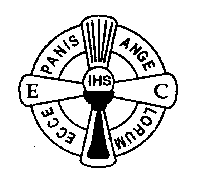Excerpts
From the Manual of the
Eucharistic Crusade of the Apostleship of Prayer
Published
in 1962 by the Central Office of the Eucharistic Crusade, Rome

Educating the Youth to Live the Mass
TEACHING CHILDREN TO PRAY:
Third Stage (continued):
b) Use of definite formulas.
Method of prayer: We should do our best to help the children perfect themselves in the practice of spontaneous prayer and to learn to talk to God in their own words, whether happy or depressed, in sorrow or in joy, etc.
The exercise of this type of prayer leads directly to mental prayer or meditation, properly so-called. The methods suggested by St. Ignatius in the Spiritual Exercises will be very useful here, although it is clear that children are not to be given, nor can they observe, every single piece of advice given by the saint. It is sufficient, for example, to tell the children the story of some gospel event and also, if it is possible, to show them a picture which illustrates it. Then some little reflection can be made on the meaning of the scene or of the words of Our Lord, and they can apply them to their own 1ives. Then they can pray to Our Lady, to Christ Our Lord, or to the heavenly Father that they may be able to put their resolution into effect. Likewise, at least with older children, the second method of prayer of St. Ignatius can be explained. This is the method by which one slowly recites some familiar prayer, such as the Our Father or Hail Mary, stopping at each word or phrase to reflect a little on its meaning. This method is very useful in overcoming a mechanical way of praying.
In the case of adolescents, this method usually consists in reciting prayers slowly and with attention. If this is done often, they very soon begin to have a fuller knowledge of the meaning of the prayer.
Moreover the Morning Offering must be properly understood and put into practice. This means that the children must get a fuller grasp of the sacrificial aspect of our lives as Christians (see Manual of the Apostleship of Prayer, pp. 23-45). These young people must be convinced, or rather believe with a deep faith, that they can serve God in every action of their lives and that they can turn their whole lives, by means of a right intention and oblation, into prayer and sacrifice for the needs of Christ's Kingdom. This faith and this practice of the daily offering is also important so that adolescents will quickly learn to put up with the SORROWS and trials of life in a truly Christian way. If they have been prepared in this way, they will not only know how to bear the difficulties of life in a Christian spirit, but they will also easily refute the doctrines of atheistic materialism which uses the existence of sorrow in the world as an argument against the existence of God and against the Catholic Faith.
Liturgy: At this time especially the children should become more familiar with the liturgy and the liturgical year (see pp. 59, 60).
Singing: In many places children and young people love to sing. Therefore care should be taken to see that they get to know the chief hymns of the liturgy and also the hymns of their own language. In addition they should be made to realize that hymns are prayers, that singing is a method of prayer. Otherwise it is very easy for singing to degenerate into a mere form of amusement. The children should also be taught Gregorian chant. They learn it very easily. An excellent form of apostolate for the Crusade is to run a “schola cantorum.” However it must be insisted right from the start that the children be well instructed in the art of singing, and that they sing in accord with the mind of the Church.
Home | Contact
| Mass Centres | Schools
| Pilgrimages | Retreats
|
Precious Blood Residence
District Superior's
Ltrs | Superor General's
Ltrs | Various
Newsletter | Eucharistic
Crusade | Rosary Clarion | For
the Clergy | Coast to Coast |
Saints | Links